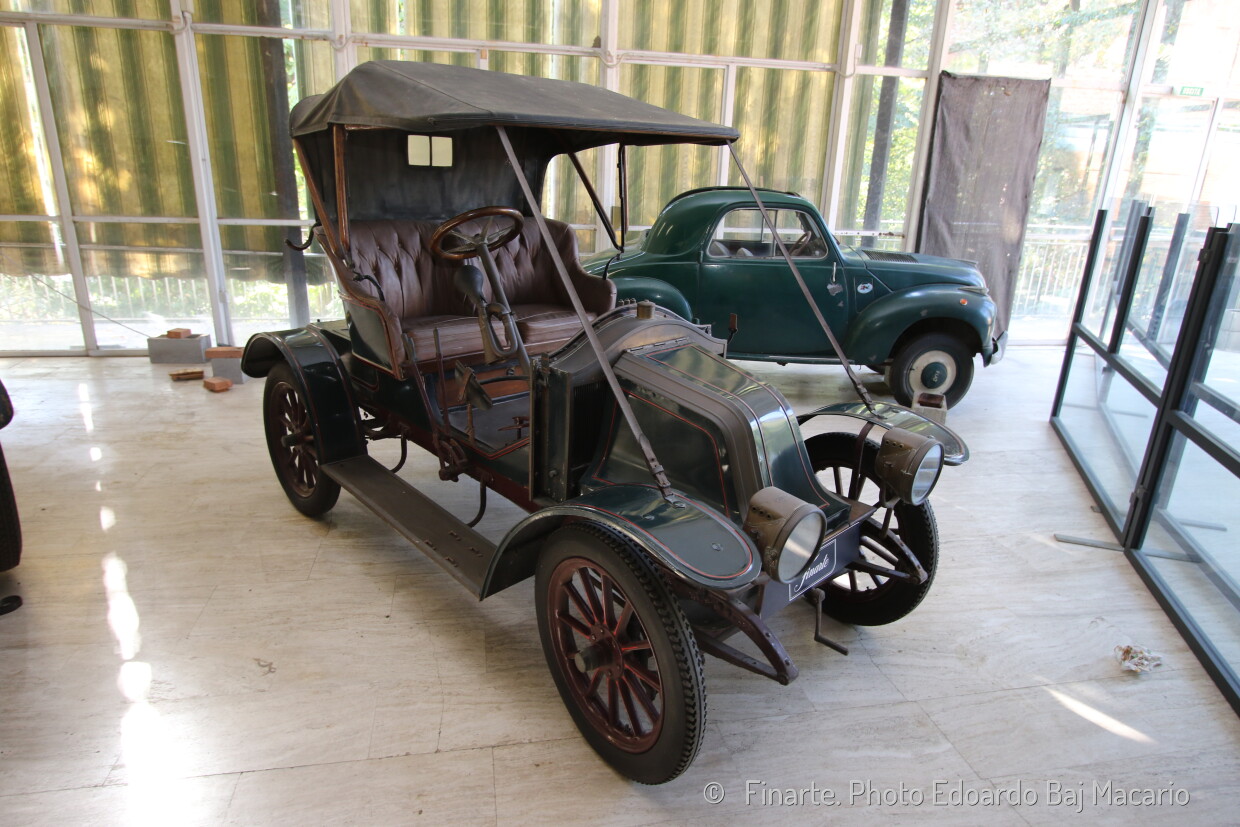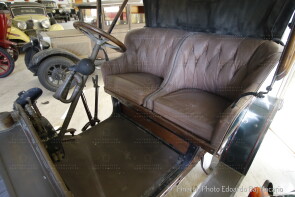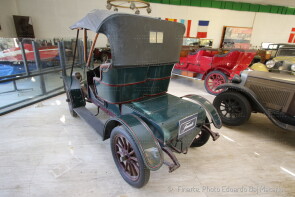
1909 Renault Type AX Cabriolet
ON/OFF
Why am I an Automotive Masterpiece?
Louis Renault was among the pioneers of the automotive industry and the founder of the eponymous car company in 1898, alongside his brother Marcel. Among the first vehicles produced by the French company were the Type AG and AG1, two cars manufactured between 1905 and 1910. These were mid-to-low range models, part of the same project, sharing the same chassis and almost the same mechanical components. They were primarily designed to serve as taxis. Their main asset was the robustness of their mechanics, which was proven during a road test at the time of their introduction. The cars hit the mark: in Paris alone, fifteen hundred units were purchased by a transport company, and many more were ordered throughout France and even abroad, particularly in London. When World War I broke out, these vehicles, long since out of production, made history when, in 1914, around six hundred Type AG and AG1 units were requisitioned to transport 6,000 French soldiers to the front during the First Battle of the Marne. These taxis became a symbol of French determination and civilian support during the war. Since then, these two models have been known by the nickname “Taxi de la Marne.” The successor of the Type AG, which retained its chassis duly modified and adapted, was the Type AX, one of the most significant Renault models introduced at the turn of the 1900s and 1910s. Presented at the 1908 Salon de Paris, was significant because, perhaps more than any earlier Renault, it represented the company's attempt to meet the needs of the less affluent, who could afford only a very economical vehicle. Like the Type AG, the Type AX also stood out for its sturdiness and reliability, and it too was widely used as a taxi in numerous major European cities and even in large cities outside Europe, such as Cairo. The Type AX was produced between 1908 and 1914. It had a two-cylinder inline engine with a displacement of 1,060 cc and an output of 11 hp. Its top speed was 55 km/h, a respectable performance for the time, given its market segment. The vehicle weighed 750 kg and could have various configurations.
This Renault Type AX with chassis no. 17069, in its standard configuration, left the factory in September 1909. Its appearance is typical of early Renaults, featuring the unique and unconventional radiator placement, set back between the engine compartment and the passenger area, partially covered by the streamlined hood. This example doesn’t have the more common “taxi use” configuration but rather features a body intended for private, “leisure” use, with a two-seat roadster cockpit plus an occasional “rumble” seat. It is barely equipped for bad weather, like many contemporary veteran cars: it has a soft top but no windshield. The two side lamps are oil-fueled. A spare wheel is mounted on the right running board. The finishes, despite being a mid-to-low range vehicle, are well crafted: black paint is matched with the brown leather seats, wood elements, and wooden wheels. Bright red striping highlights the shapes. There is information only about the relatively recent history of chassis no. 17069: it was purchased at a Christie's auction in Monza in 1974 for the car museum of the “Terme Idroterapiche delle Saline di Miradolo” spa complex. It was displayed there for a long time, statically, and remained the museum's property for almost 50 years. On November 14, 2022, the car was auctioned at “Finarte 2022: Automobili da Collezione”. After being idle for more than 30 years, it required subsequent restorations, but the mechanical condition and bodywork were intact, with the soft top, paint, and trim renewed. The Type AX, chassis no. 17069, was on that occasion sold to a private collection.




